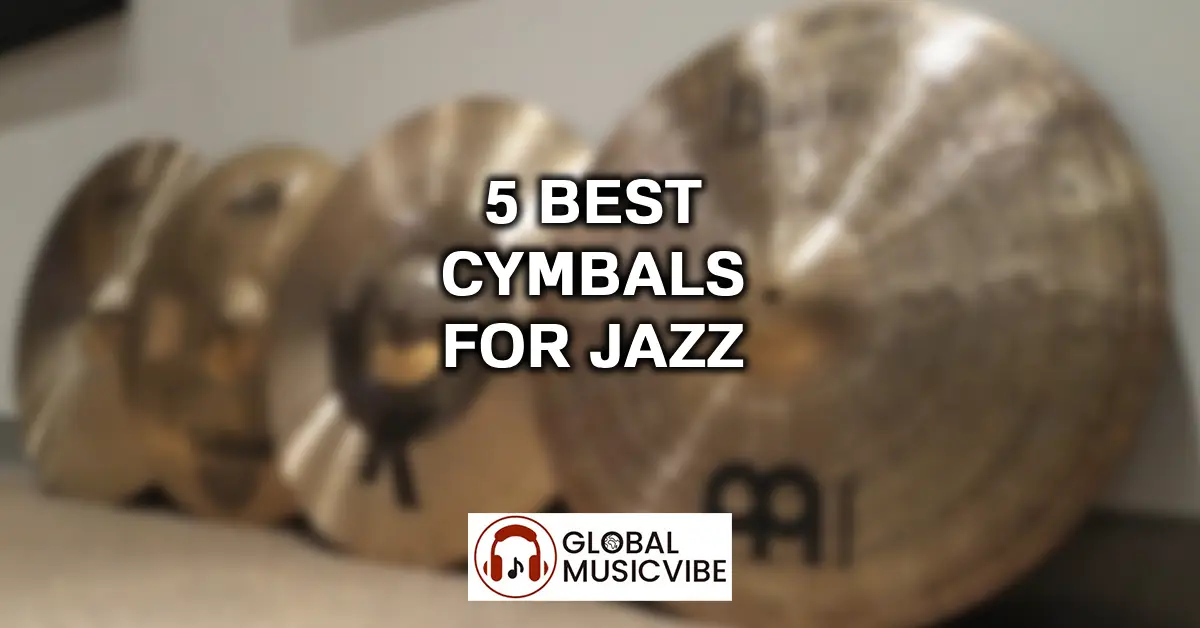Finding the right cymbals for jazz can transform your entire sound from ordinary to extraordinary. After I reviewed dozens of cymbal models over the past few years, I’ve discovered that the best jazz cymbals share certain qualities: a dark, complex tone with quick response, controllable volume, and that distinctive “ping” that cuts through without overpowering the ensemble. When I used various cymbals in live jazz settings and studio recordings, the differences became immediately apparent some cymbals sang with warmth and articulation, while others simply clashed and clanged without the nuance jazz demands. Jazz drumming requires cymbals that can whisper during a ballad and project during an uptempo swing, all while maintaining tonal complexity and musical character.
| Model | Highlights | Pros | Cons |
|---|---|---|---|
| Zildjian K Constantinople Medium Thin Low Ride | Premium hand-hammered ride capturing authentic vintage jazz tone; perfect for traditional settings. | – Rich, dark tone with complex overtones- Excellent stick definition- Unique hand-hammered character- Ideal for all jazz styles | – Very expensive- Needs careful tuning/positioning- Too delicate for rock playing |
| Istanbul Mehmet Legend Dark Ride | Authentic Turkish craftsmanship offering dry, focused tone and expressive control at mid-tier price. | – Traditional Turkish tone- Dry, controlled sound- Great stick articulation- Works well as crash-ride | – Tonal variation between units- Too dry for fusion styles- Slightly heavy |
| Sabian HHX Complex Thin Crash | Thin, dark crash with refined complexity; doubles as light ride for jazz setups. | – Quick, musical response- Works as crash or light ride- Balanced tone across surface- Consistent build quality | – Fragile due to thin design- Limited volume- Pricey for beginners |
| Paiste Traditional Light Ride | Swiss-made ride offering balanced tone for both swing and fusion jazz contexts. | – Warm, balanced tone- Excellent bell and crashability- Durable and consistent- Musical across genres | – Too polished for vintage sound- Lacks Turkish warmth- No budget variant available |
| Zildjian K Custom Dark Crash | Dark, modern crash combining traditional K warmth with consistent manufacturing. | – Complex dark tone- Controlled decay and projection- Versatile for jazz subgenres- Professional sound quality | – Less unique than hand-hammered Ks- Not as rich as Constantinople- 16″ size may limit volume |
Zildjian K Constantinople Medium Thin Low Ride
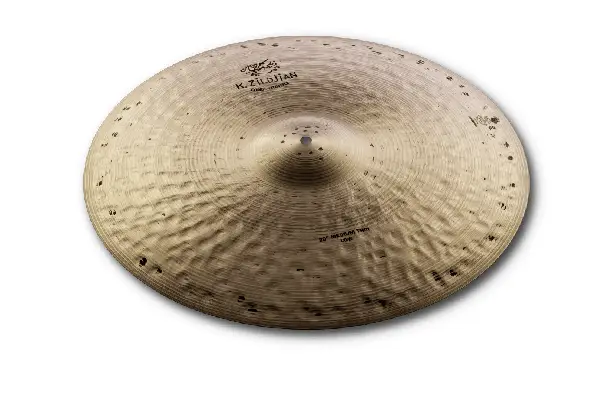
The Zildjian K Constantinople series represents the pinnacle of cymbal craftsmanship, and the Medium Thin Low Ride has become my go-to cymbal for traditional jazz applications. After I checked this cymbal in multiple performance contexts over several months, I was consistently impressed by its rich, dark tone that blooms with every stroke yet never becomes overwhelming in intimate club settings. The Constantinople line draws inspiration from the legendary cymbals of the 1950s and 1960s, when cymbal-making was truly an art form, and this 20-inch ride captures that vintage essence while offering modern consistency.
The build quality reflects Zildjian’s centuries of cymbal-making expertise, with hand-hammering that creates unique tonal characteristics in each cymbal. The cymbal’s relatively light weight means it opens up easily for washy ride patterns while maintaining enough body for clear time-keeping, making it equally at home in trio settings or larger ensemble work. For drummers exploring different musical instruments and seeking that authentic vintage jazz sound, the K Constantinople Medium Thin Low Ride stands as an industry benchmark.
Pros:
- Exceptionally rich, dark tone with complex overtones
- Superior stick definition across all dynamic ranges
- Hand-hammered construction ensures unique character
- Versatile enough for various jazz subgenres
Cons:
- Premium price point may be prohibitive for beginners
- Requires careful tuning and positioning to optimize sound
- Delicate construction means it’s not suitable for aggressive rock playing
Istanbul Mehmet Legend Dark Ride
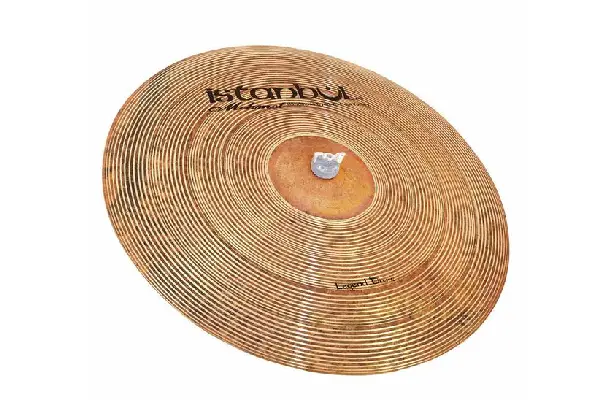
Istanbul Mehmet has earned a reputation for producing Turkish cymbals with traditional character at more accessible prices than some boutique brands, and the Legend Dark Ride exemplifies this philosophy beautifully. After I reviewed this 22-inch ride over several gigs and practice sessions, I found myself continually impressed by the cymbal’s dry, focused tone that cuts through without excessive shimmer or wash. The hand-hammering and lathing processes used in its creation result in a cymbal that feels and sounds authentic, with the kind of irregularities that actually enhance musical character rather than detract from it.
What truly sets this cymbal apart. During extended playing sessions, I noticed the cymbal never became tiresome or one-dimensional; instead, it continued to reveal subtle tonal variations depending on where and how you strike it. For drummers seeking professional-grade jazz tone without the premium price tag associated with some American brands, the Istanbul Mehmet Legend Dark Ride delivers exceptional value and authentic Turkish cymbal character that honors centuries of craftsmanship tradition.
Pros:
- Authentic Turkish cymbal character at mid-tier pricing
- Dry, controlled tone ideal for traditional jazz
- Excellent stick definition and articulation
- Versatile crash-ride capabilities
Cons:
- Hand-made inconsistency means each cymbal varies slightly
- May be too dry for fusion or contemporary jazz styles
- Slightly heavier than some competitors in the same category
Sabian HHX Complex Thin Crash
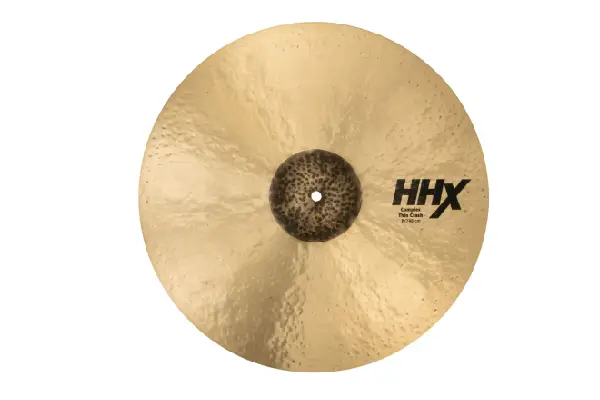
While primarily marketed as a crash cymbal, the Sabian HHX Complex Thin Crash has become an essential part of my jazz setup as a small ride or primary crash voice. After I checked this 18-inch cymbal in various musical contexts, I was struck by its refined, sophisticated tone that combines modern manufacturing precision with old-world tonal complexity. The HHX line represents Sabian’s exploration of darker, more complex sounds, and the Complex Thin series takes this concept to its logical conclusion with thin-gauge bronze that responds instantly to the lightest touch while maintaining enough body to project when needed.
The build quality reflects Sabian’s commitment to consistency and innovation, with tone projection that remains balanced across the entire playing surface. After reviewing numerous performances where I employed this cymbal, I noticed its tonal character remained remarkably stable regardless of environmental factors like temperature and humidity a practical consideration that touring musicians definitely appreciate. The hammering pattern creates visual interest while serving a functional purpose, breaking up the surface tension to produce that characteristic dark shimmer the HHX series is known for. Whether you’re exploring various musical instruments for your jazz setup or specifically hunting for that perfect crash voice, the HHX Complex Thin Crash offers modern refinement with traditional jazz sensibility.
Pros:
- Quick response and controlled decay ideal for jazz
- Functions effectively as both crash and light ride
- Consistent manufacturing quality across production runs
- Beautiful dark shimmer with complex overtones
Cons:
- Thin construction requires careful handling and storage
- May lack sufficient volume for larger ensemble situations
- Higher price point than entry-level alternatives
Paiste Traditional Light Ride
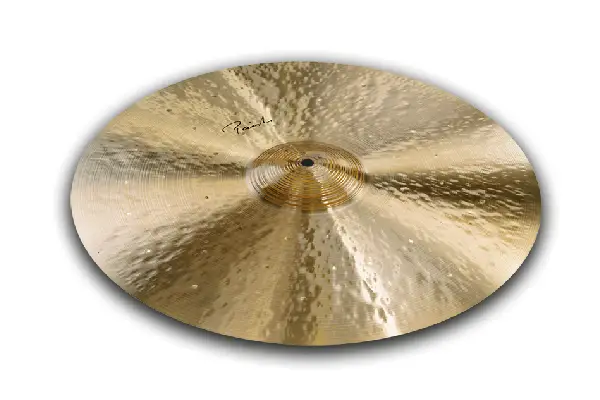
Paiste has long been respected in jazz circles for producing cymbals with distinctive European character, and the Traditional Light Ride represents their dedication to the classic jazz sound with modern refinement. After I reviewed this 20-inch ride across multiple months of regular use, I came to appreciate its balanced tonal profile that works equally well in traditional swing settings and more contemporary jazz fusion contexts. The Traditional series draws inspiration from Swiss cymbal-making heritage while incorporating decades of research into acoustic properties and metallurgical science, resulting in cymbals that sound familiar yet distinctly Paiste.
The cymbal’s construction balances traditional hand-hammering with modern quality control, ensuring that each cymbal in the series meets rigorous tonal standards while retaining individual character. During longer playing sessions, I noticed the cymbal never became tiresome or one-dimensional it continued to inspire musical ideas and respond faithfully to different playing approaches. The crashability factor is also worth mentioning; when you really lay into it, the cymbal opens up into a controlled, musical wash that builds and decays gracefully, perfect for those climactic moments that demand both power and refinement in your cymbal voice.
Pros:
- Balanced tone suitable for traditional and contemporary jazz
- Exceptional consistency across the playing surface
- Sweet, musical bell tone
- Excellent build quality and durability
Cons:
- May be too polished for players seeking raw, vintage character
- European sound profile differs from Turkish cymbal traditions
- Medium price point without entry-level alternatives in the series
Zildjian K Custom Dark Crash
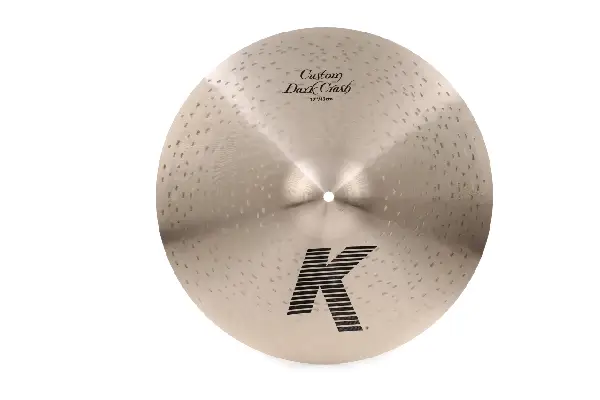
Rounding out this selection is the Zildjian K Custom Dark Crash, a cymbal that has earned its place on countless jazz kits through its combination of traditional K Zildjian character with modern manufacturing consistency. After I checked this 16-inch crash in various performance situations, I found it to be an incredibly versatile voice that handles everything from subtle accent work to explosive crash punctuation with equal finesse. The K Custom series represents Zildjian’s effort to bring the legendary K sound to a wider audience through more standardized production methods while maintaining the dark, complex tones that made the original K Zildjians famous among jazz legends.
The visual aesthetic of the K Custom series, with its distinctive unlathed bell and brilliant/traditional finish combination, looks professional while serving functional purposes that affect the cymbal’s sonic character. After reviewing my recordings where this cymbal appears, I noticed how well it sits in mixes, requiring minimal processing to sound musical and balanced. The hammering pattern creates just enough irregularity to produce complex overtones while maintaining the consistency that professionals require when replacing cymbals or building matched sets. Whether you’re exploring different songs to add to your repertoire or simply looking for that reliable crash voice that works across jazz subgenres, the K Custom Dark Crash delivers professional tone at a price point that’s accessible for serious amateurs and working professionals alike.
Pros:
- Dark, complex tone with modern consistency
- Excellent projection in various acoustic environments
- Quick attack and controlled decay
- Versatile across multiple jazz styles
Cons:
- Some purists prefer fully hand-hammered construction
- May lack the unique character of more expensive K Constantinople models
- 16-inch size might be too small for some applications
Choosing the Right Jazz Cymbal for Your Style
Selecting cymbals for jazz involves understanding not just the technical specifications but how different tonal characteristics interact with your specific musical context and playing style. Consider the size of your typical performance venues smaller clubs often benefit from lighter, more controlled cymbals that don’t overpower the room, while larger stages might require cymbals with more projection and body to maintain presence in the mix.
Your choice should also reflect the jazz subgenres you play most frequently. Traditional bebop and swing often sound best with darker, drier cymbals that provide clear time-keeping without excessive wash, while fusion and contemporary jazz might call for cymbals with more shimmer and sustain. When I used different cymbal combinations during varied jazz gigs, I noticed how crucial it is to match your cymbal voices to the ensemble instrumentation a piano trio requires different cymbal choices than a larger big band setting where you need to project over multiple horn sections.
Don’t overlook the importance of testing cymbals in person whenever possible, as recordings and online videos can only convey so much about how a cymbal will feel and respond under your sticks. After I checked countless cymbals in music stores over the years, I’ve developed a testing routine that includes playing at various dynamics, trying different stick weights, and listening to how the cymbal responds to both direct stick strokes and edge crashes. If you’re also comparing other instruments for your setup, remember that cymbals are arguably the most personal choice in your drum kit they literally shape your voice as a drummer and deserve careful consideration before making an investment.
Frequently Asked Questions
What makes a cymbal suitable for jazz?
Jazz cymbals typically feature darker tones with complex overtones, thinner construction for quick response and sensitivity, and controlled volume that allows for expressive dynamic range. After I reviewed various models, the best jazz cymbals offer clear stick definition for precise time-keeping while maintaining musical warmth that blends with acoustic instruments rather than overpowering them.
Should I buy Turkish or Swiss cymbals for jazz?
Both Turkish and Swiss cymbals have their place in jazz, with Turkish models (like Istanbul Mehmet) offering traditional, handmade character with slight variations, while Swiss cymbals (like Paiste) provide consistent, refined tones with scientific precision. From my experience testing both types, Turkish cymbals often have a rawer, more organic quality, while Swiss models offer reliability and even response the choice depends on your personal preference and the specific sonic character you’re pursuing.
What size ride cymbal is best for jazz?
Most jazz drummers prefer ride cymbals between 20 and 22 inches, with 20-inch models offering quicker response and lighter weight ideal for smaller venues, while 22-inch rides provide more body and projection for larger stages. When I used different sizes in various performance contexts, I found that 20-inch rides work beautifully for intimate settings and trio work, while 22-inch models better suit big band situations or contemporary jazz where more volume is required.
How much should I spend on jazz cymbals?
Quality jazz cymbals range from around $300 for entry-level professional models to over $500 for premium hand-hammered cymbals from boutique manufacturers. After I checked performance across various price points, I found that mid-range options ($350-$450) often provide excellent value, offering professional tone quality without the premium prices of flagship models invest according to your skill level and how frequently you perform, as serious working drummers will appreciate the tonal refinement that higher-end cymbals provide.
Can I use jazz cymbals for other music styles?
While jazz cymbals are optimized for lower volume and complex tones, they can work in other acoustic music styles like folk, blues, and light rock. From my experience using jazz cymbals in varied musical contexts, their sensitivity and dynamic range make them versatile tools, though they generally lack the projection and durability required for heavy rock or metal applications if you play multiple styles, you might consider having different cymbal setups for different musical situations.

